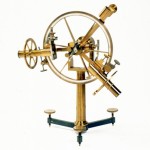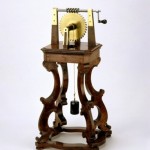The Science and Technology Foundation was established in 1987 by the Tuscan Region, and by the Province and City of Florence, with the scientific support of the Institute and Museum of the History of Science, to promote and disseminate science and technology, starting with the revitalization and promotion of the historical scientific heritage of the 19th-century Tuscan Technical Institute.
The foundation’s purpose is to promote and make available a highly valuable patrimony that has been preserved for over a century in its original location, remaining almost unknown until now. This rich collection, unique in Italy, has more than fifty thousand items including natural history collections, scientific instruments, and models of machines, manufactured products, as well as library collections of historical interest.
Developing the potential of this priceless legacy, the Foundation intends to promote the ongoing dissemination of scientific knowledge, setting up a new laboratory where the appropriate use of historical equipment will go hand in hand with that of current technologies and modern communication techniques. Inaugurated before the President of the Republic in April 2002, the Florence planetarium is run by the Foundation, together with the Institute and Museum of the History of Science and the Arcetri Astrophysical Observatory.
The Collections Formed during the 19th century, the extensive collections have been tenaciously preserved over the course of two centuries by the Galileo Galilei Technical Institute. They represent the achievement of an ambitious project that, starting with Galileo’s experimental example, succeeded in establishing in Florence, at the end of the Grand Duchy, the Tuscan Technical Institute: the first important Italian polytechnic institute for science and technology, with its foremost collection of scientific equipment and instrumentation, recognized as being unique in Italy and in Europe.
Forgotten for several decades, its collections were rediscovered in the 1970’s, thanks to a growing interest in the history of science. From then, a long and patient effort began to identify, restore, catalog, and preserve them so as to ensure their conservation and valorization.






